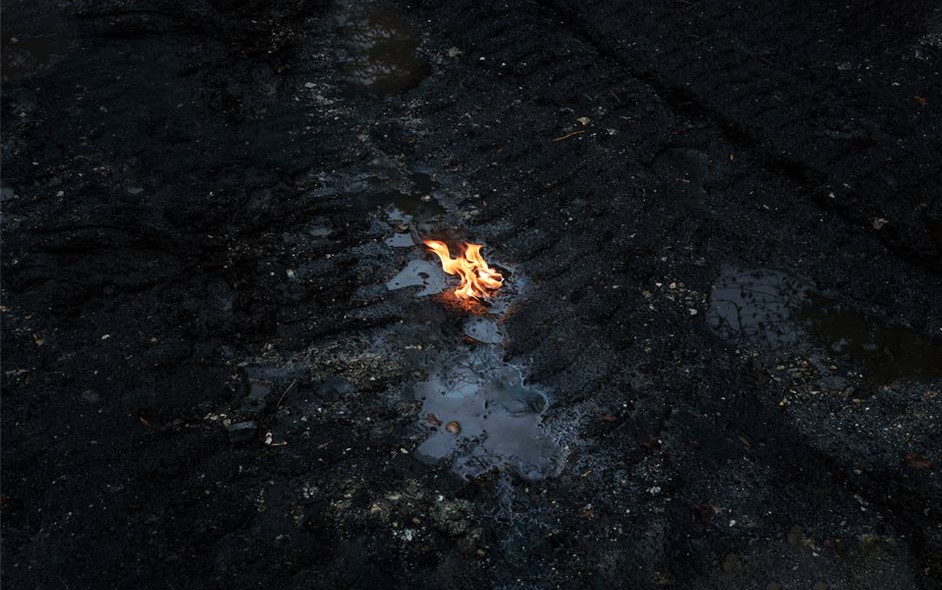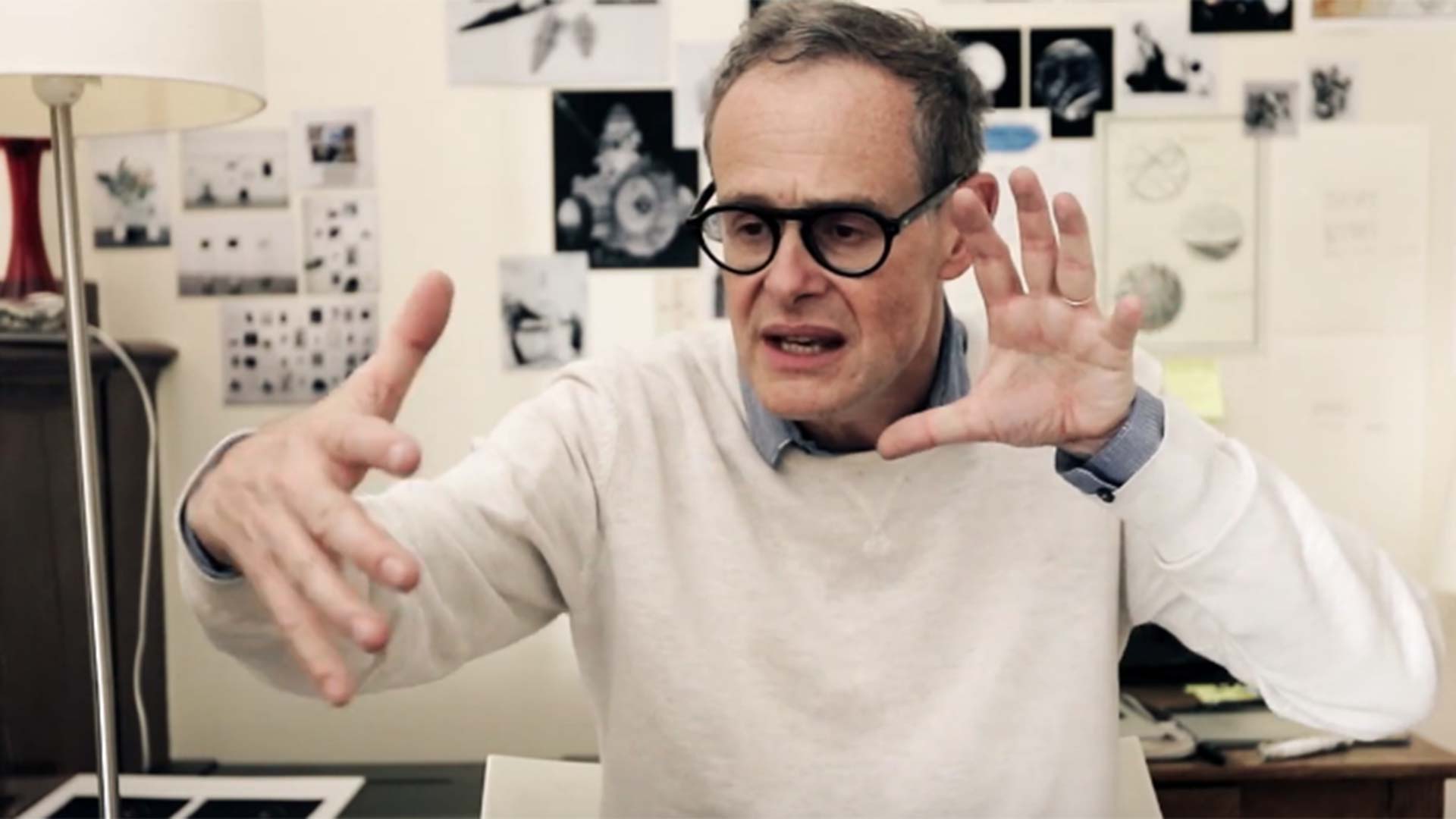
RÉSIDENCE 2019
Matthieu Gafsou, Matilda Holloway & Manon Lanjouère
The few discussions I’ve had with artists have given me a perspective on what I do. Because scientists are very attached to reality. We are explorers, not really dreamers. With them, I rediscovered this dream.
These very sincere words are those of our sponsor, Sylvestre Maurice, an astrophysicist, astronomer and planetary scientist specialising in the exploration of the solar system. It testifies to the touching curiosity of an internationally renowned scientist for modes of artistic expression with unsuspected evocative power.
It is true that, at first glance, photography and science are quite different: they have neither the same object, nor the same methods and purposes. While the former is concerned with reason and reality, the latter associates the sensitive world with the imaginary. And yet, on closer inspection, they both question the world by making the invisible visible, by pushing back the frontiers of knowledge, by giving us a new way of perceiving. If photography tells the story of the world’s twists and turns, the sciences help us to understand it better.
Created at the end of 2015, the Résidence 1+2 aims to bring people together, those who previously had no chance to talk to each other. Halfway between creation and knowledge sharing, it associates photography with science, produces, promotes and enhances an author’s photography closely linked to an exceptional scientific heritage present in Toulouse, Haute-Garonne, Occitanie. We wish to create, in a collaborative and participative spirit, the conditions for the production of sensitive content. In Toulouse, artists and scientists share thoughts and resources, and create new knowledge in a sort of factory of possibilities. At a time when the boundaries between all disciplines are collapsing, bringing artists and scientists together in the same project is a way of inviting them to join forces, to energize new transversalities, to renew creative forms in order to better understand and face the challenges of the contemporary world. For this fourth edition, our three photographers in residence are fully involved in this multidisciplinary dynamic, exploring new creative spaces. They deliver their subjectivity on multiple and renewed sensitive surfaces – photographs, image diversions, fictions, drawings, writings, installations – in an assumed rereading of reality. Their research is supported by institutions and scientists from the metropolitan, departmental and regional areas.
Each year and during two months of production (March and April), bringing together three photographers from different backgrounds, generations and practices, the 1+2 Residence aims to be a meeting place for creative reflection and a laboratory for experimentation. In October-November, their work will be presented on different media as ways of telling the same story: a museum-style exhibition and a set of three books (published by Filigranes). A creative film (26′) is entrusted to a filmmaker (often a first film) in order to highlight the converging trajectories of our residents.
Understanding and actively confronting the challenges of the contemporary world also means evoking each citizen and building with him or her new reflections for new practices. Thus, an inaugural weekend open to all is organised with several highlights, such as the national symposium “Photography and Science” on the second Saturday of October, where photographers, scientists and citizens exchange views during several thematic and interactive round tables.
– Philippe Guionie
Director of the Résidence 1+2
EDITO
LES PHOTOGRAPHES
SYLVESTRE MAURICE
PATRON 2019
Sylvestre Maurice is an astrophysicist at the Institut de recherche en astrophysique et planétologie (IRAP, CNRS/UT3 – Paul Sabatier/CNES), and an astronomer at the Observatoire Midi-Pyrénées.
He is a planetologist, specialised in the exploration of the solar system. Sylvestre Maurice has taken part in numerous European Space Agency and NASA solar system exploration missions. He studied the plasma environment and magnetic field of Saturn as part of the Cassini mission. At the same time, he was interested in the chemical composition of planetary surfaces, starting with the lunar surface as part of the Lunar Prospector mission. Together with American collaborators, he contributed to the discovery of water ice at the Moon’s poles (1998) using neutron spectroscopy. Using this type of instrument, the same team discovered water at the equator of Mars (2004) with the Mars Odyssey mission, and water ice at the poles of Mercury (2011) with the Messenger mission. From 2005, he imagined and coordinated with his colleague Roger Wiens from Los Alamos National Laboratory the construction of the ChemCam instrument on board the NASA rover Curiosity. This instrument provided the first French data from the surface of Mars in 2012 and, together with the other instruments of the mission, demonstrated the past habitability of Mars. He is also coordinating with Fernando Rull of the University of Valladolid the development of the Raman instrument on ESA’s ExoMars Mars rover, which should analyse the mineralogical composition of samples taken by the rover’s drill to a depth of 2 m below the surface of Mars to identify – if any – evidence of past life on Mars. ESA’s ExoMars rover will be launched in 2020. In 2014, he and Roger Wiens presented an improved version of ChemCam for NASA’s next rover, Mars 2020. Selected by NASA as SuperCam, this instrument will take over the chemical analysis of ChemCam, and embeds new Raman and infrared measurement channels for the mineral composition of Mars. The Mars 2020 mission aims to determine whether life has developed on the surface of Mars and to prepare a set of samples to be brought back to Earth on future Mars missions, known as sample return missions. The Mars 2020 mission will take off in July 2020.

